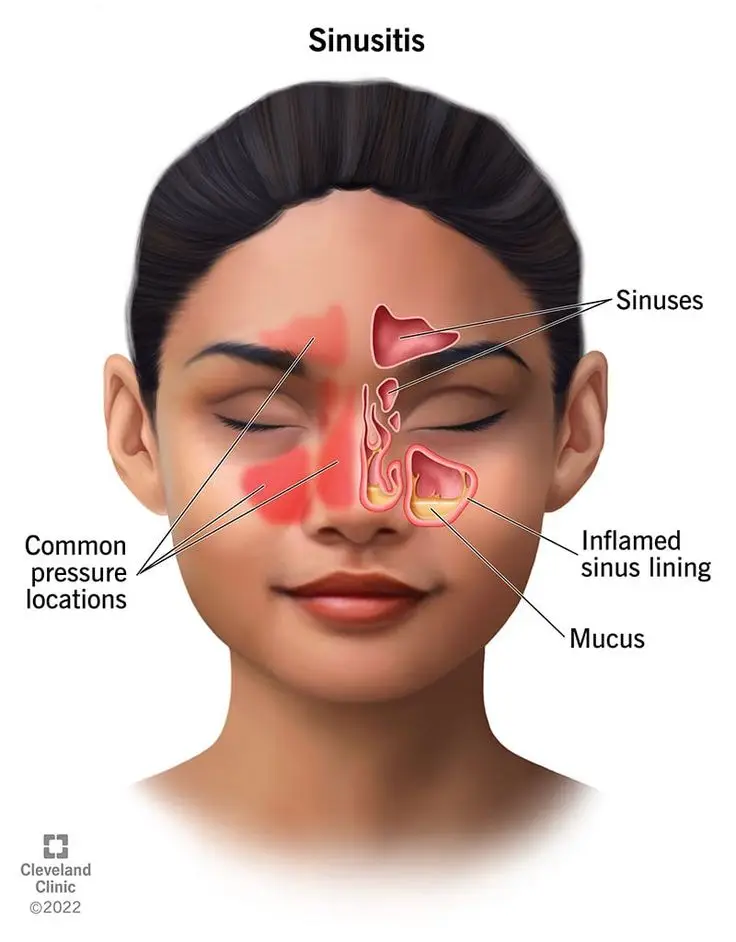Forehead Pain: Causes, Relief, and Prevention Strategies That Actually Work
Forehead headaches can feel like a band of pressure wrapped around your skull, making it hard to concentrate, sleep, or even function normally. From sinus pressure to screen-time fatigue, the reasons behind this specific kind of pain vary widely—but so do the solutions.
In this guide, we’ll break down forehead pain causes, treatments, and prevention tips that are backed by research and easy to implement. Whether you’re dealing with eyestrain, sinusitis, or stress-induced headaches, this post has you covered—with an emphasis on low-competition topics that aren’t being fully explored elsewhere.

Understanding Forehead Headaches
A frontal headache (pain in the forehead) isn’t a diagnosis—it’s a symptom. It can feel dull, throbbing, sharp, or tight, depending on what’s causing it. Often, it’s triggered by everyday habits, but in rare cases, it can signal something more serious.
Common Causes of Forehead Pain
1. Eyestrain Leading to Forehead Pain
Staring at screens too long? You’re not alone. Digital eyestrain—now known as Computer Vision Syndrome—puts tension on your eye muscles, which radiates to the forehead.
Solution: Use the 20-20-20 rule (every 20 minutes, look at something 20 feet away for 20 seconds), and adjust screen brightness to match room lighting.
2. Sinusitis-Related Forehead Pain
When your sinuses become inflamed due to infection or allergies, you may feel pressure in the forehead, cheeks, and behind the eyes. This is common during allergy season or after a cold.
Natural relief tips:
Steam inhalation
Saline nasal sprays
Stay hydrated to thin mucus

3. Dehydration
Hydration and headache prevention go hand in hand. When your body lacks water, your brain can temporarily shrink and pull away from the skull, causing pain.
Pro tip: Add electrolytes to your water if you’re sweating excessively or exercising. Even mild dehydration can trigger a throbbing sensation in the forehead.
4. Stress and Anxiety
Tension headaches are the most common cause of forehead pain, especially during high-stress periods. They often bring a tight, band-like feeling and are typically dull rather than sharp.
Quick stress management tips:
-
Try breathing exercises
-
Limit caffeine and alcohol
-
Practice forehead headache relief exercises like gentle neck and shoulder stretches
5. Sleep Disturbances
Poor sleep quality contributes to headache at the front of the head due to lack of proper brain recovery. Insomnia, sleep apnea, and disrupted sleep patterns can all play a role.

Forehead Pain and Vision Problems
When forehead pain is combined with visual disturbances like blurriness or pain behind the eyes, you might be dealing with more than just fatigue. Issues like astigmatism, uncorrected vision, or even glaucoma can trigger chronic forehead pain.
Get an eye exam if your pain worsens during tasks like reading or driving.
Natural Remedies for Forehead Headaches
Instead of immediately reaching for medication, consider these natural remedies:
1. Essential Oils for Forehead Pain
Peppermint and lavender oils have been shown to relax muscle tension and ease sensitivity to light and sound associated with headaches.
How to use:
-
Apply diluted peppermint oil to the temples and forehead
-
Inhale lavender oil via a diffuser before bed
2. Yoga Poses for Headache Relief
Certain poses help reduce stress and improve blood flow to the head.
Best poses:
Child’s Pose
Legs-Up-The-Wall
Cat-Cow Stretch
Practicing these 10–15 minutes a day can help prevent tension headache symptoms.
3. Forehead Headache Relief Exercises
Gentle neck, shoulder, and face stretches reduce muscular tension.
Try this:
Slowly tilt your head left and right
Roll your shoulders backward 10 times
Gently massage your forehead with circular motions
Do this twice a day if you’re at a desk job.
When to Seek Medical Attention
Serious Causes of Forehead Pain:
Meningitis: Usually paired with neck stiffness, fever, and nausea
Brain tumors or hemorrhages: Rare but serious; typically worsen over time and include neurological symptoms
Stroke: Accompanied by vision loss, slurred speech, or numbness
If your headache is severe, sudden, or different from your usual pattern, seek help immediately.
Preventing Forehead Headaches
1. Hydration and Nutrition
Drink at least 8 glasses of water a day, and avoid processed foods high in MSG or sodium—both known dietary triggers for forehead headaches.
2. Ergonomic Adjustments
Poor posture and screen setup can cause repeated forehead pain.
Optimize your workstation:
Keep screens at eye level
Sit with feet flat on the ground
Use blue light filters
3. Limit Screen Time
Too much digital exposure not only affects your eyes but also contributes to sinus pressure, eyestrain, and mental fatigue.
Use screen timers or app blockers to enforce breaks
Special Consideration: Forehead Pain in Children
Children rarely express headaches the way adults do. Look for signs like:
Rubbing the forehead
Avoiding bright lights
Complaining of nausea or “not feeling well”
Possible causes include dehydration, sinus issues, and screen overuse. Consult a pediatrician if symptoms persist.
Frequently Asked Questions
How can I tell the difference between a migraine and a tension headache?
Migraines: Often one-sided, with nausea, photophobia, and throbbing pain.
Tension headaches: Typically bilateral and feel like a dull pressure or tight band.
Can seasonal allergies cause forehead pain?
Yes—sinus inflammation from allergies leads to pressure buildup in the forehead area. Antihistamines, nasal rinses, and avoiding allergens can help.
Does acupuncture help forehead headaches?
Studies show acupuncture can reduce headache frequency and severity by improving circulation and reducing muscle tension.
Final Thoughts
Forehead headaches are frustrating—but they’re manageable. With a mix of natural remedies, smarter habits, and understanding your unique triggers, you can reduce frequency and improve your quality of life.
Start by hydrating, adjusting your screen setup, and trying forehead headache relief exercises or yoga poses for headache relief. If symptoms persist or worsen, don’t hesitate to consult a doctor.
Keywords used strategically:
forehead pain causes and treatments
eyestrain leading to forehead pain
natural remedies for forehead headaches
essential oils for forehead pain
hydration and headache prevention
forehead headache relief exercises
dietary triggers for forehead headaches
forehead pain and vision problems
yoga poses for headache relief
impact of screen time on forehead headaches
Leave a Reply